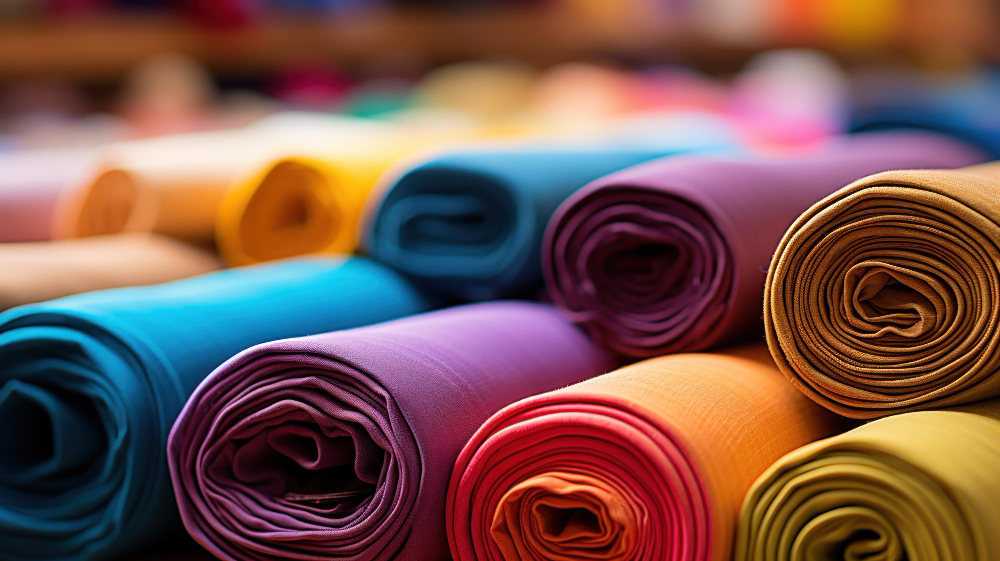
Do you know that the textile industry produces 92 million tons of waste every year globally? A feasible strategy to mitigate the environmental effect of the textile sector is to utilise organic fabrics. These fabrics produce zero waste and cause less pollution; it is kind to the earth. Clothes made from organic fabrics are non-toxic; they do not cause irritation or allergies and feel more gentle on the skin. But do you know which fabrics are made from organic fibers? Well, let’s find out together.
Table of Contents
What Are Organic Fabrics?
Organic fabrics are made from sustainable organic fibers, and they do not use harmful chemicals or toxins in making these fabrics.
The term sustainable clothing is relatively new to the textile industry. Although it is new, it is really popular in the fashion world. Some of the top fashion brands now only promote eco-friendly products to reduce their impact on the global carbon footprint.
Sustainable clothes are made using organic fibers and fewer chemicals, and you can recycle them. They are biodegradable, and they do not create harmful waste in the environment like conventional fabrics.
5 Organic Fabrics Best Choice for Textile Manufacturers
Organic fabrics are made from bio-degradable materials. These fabrics decompose fast because of microorganisms like fungi and bacteria. In contrast, non-biodegradable textiles are chemically modified and pollute air, soil and water. Furthermore, bio-degradable textiles produce less waste, reduce greenhouse gas emissions and enrich soil nutrients. Here are some organic fabrics:
Organic Cotton
Cotton is one of the most common and comfortable materials in the clothing business that never disappoints you. But do you know 16% of the world’s pesticide is used in cotton production? The overall cotton production goes through intensive chemical treatment for soft textures and different colors. On the other hand, organic cotton is less harmful to the environment and versatile.
Recycled Cotton
Recycled cotton is from post-industrial waste. This process requires less water and energy than the manufacturing process for conventional cotton. This directly contributes to mitigating environmental degradation and greenhouse gas emissions. The cotton recycling process is done by mechanical recycling by shredding old fabrics and reforming them into yarns. This method does not produce any byproducts or waste material.
Linen
Linen fibers are made from flax plants; they have characteristics similar to those of hemp. This fabric is summer-friendly and does not need pesticides in its production process. The fabric is anti-bacterial and has moth-resistance properties, which makes it durable for almost 20 years. The most amazing feature of this fabric is that it gets softer with every wash. The fabric is so comfortable that people with sensitive skin and allergic problems can wear it without any hesitation. The manufacturing process is also simple, requires minimal workforce and consumes less water in the crafting process.
Bamboo Linen
Bamboo Linen fabrics are made from bamboo trees. Bamboo is the latest addition to the textile industry that has exceptional advantages. It is one of the plants with the fastest growth rate and consumes more carbon dioxide than any other plant on Earth. In the textile industry, it is better than any chemically processed fabric. It pulls away moisture and fosters air circulation, keeping your body cool in the summer.
Hemp
The hemp plant grows fast, and it does not need high maintenance. Hemp does not need large land, excess amounts of water, or pesticides like traditional manufacturing methods. Hemp fabric is known for its extraordinary resilience, comfort and longevity. Moreover, hemp benefits the environment by reviving the soil, stopping erosion and boosting nutrient absorption.
What to Do Next?
The fashion world is evolving, and the demand for sustainable clothing made from organic fibers is also increasing. Organic fabrics are an effective and sustainable substitute for traditional textiles. It contributes to both environmental conservation and promotes sustainable practices in the textile industry. Therefore, the use of organic fabrics should be encouraged to improve the social, economic, and environmental well-being of the nation as well as the whole world. It can reduce the negative impact of the textile industry on the environment. The fabrics we discussed here are unique, reduce water consumption and greenhouse gas emissions and improve biodegradability.

